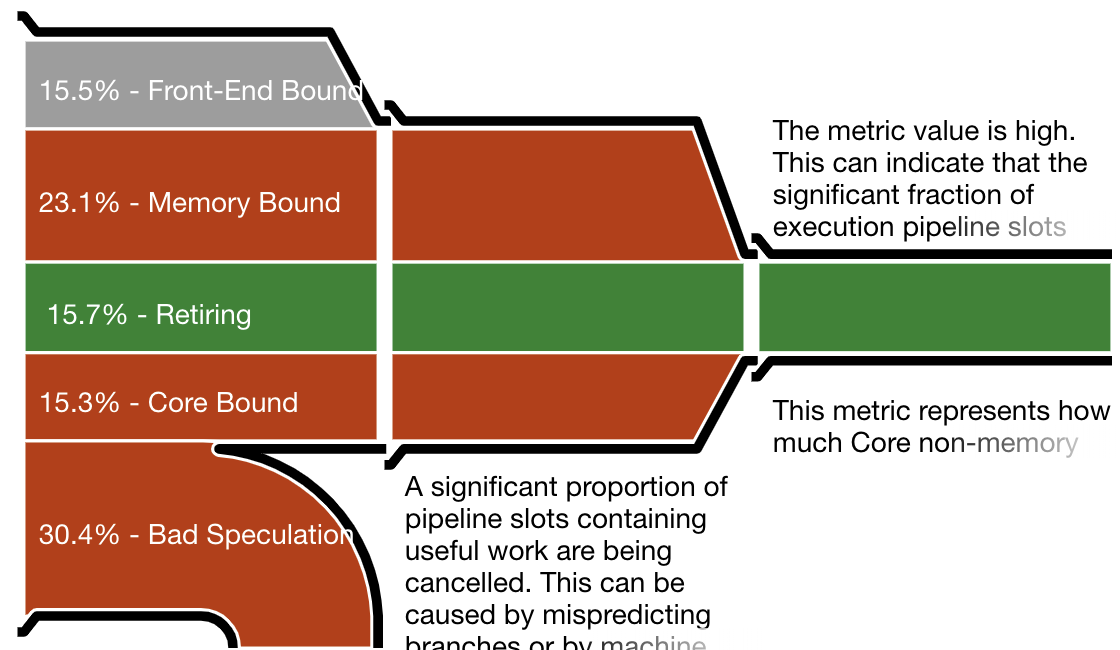Introduction

A while ago, Andrei Alexandrescu started a thread in the D Programming Language forums, titled “Perfect forwarding”, about a challenge which came up during the July 2020 beerconf:
Write an idiomatic template
forwardthat takes an aliasfunand defines (generates) one overload for each overload offun.
Several people proposed solutions. In the course of the discussion, it arose that there is sometimes a need to alter a function’s properties, like adding, removing, or hanging user-defined attributes or parameter storage classes. This was exactly the problem I struggled with while trying to support all the bells and whistles of D functions in my openmethods library.
Eventually, I created a module that helps with this problem and contributed it to the bolts meta-programming library. But before we get to that, let’s first take a closer look at function generation in D.
The Good
I speculate that many a programmer who is a moderately advanced beginner in D would quickly come up with a mostly correct solution to the “Perfect forwarding” challenge, especially those with a C++ background who have an interest in performing all sorts of magic tricks by means of template meta-programming. The solution will probably look like this:
template forward(alias fun)
{
import std.traits: Parameters;
static foreach (
ovl; __traits(getOverloads, __traits(parent, fun), __traits(identifier, fun))) {
auto forward(Parameters!ovl args)
{
return ovl(args);
}
}
}
...
int plus(int a, int b) { return a + b; }
string plus(string a, string b) { return a ~ b; }
assert(forward!plus(1, 2) == 3); // pass
assert(forward!plus("a", "b") == "ab"); // pass
This solution is not perfect, as we shall see, but it is not far off either. It covers many cases, including some that a beginner may not even be aware of. For example, forward handles the following function without dropping function attributes or parameter storage classes:
class Matrix { ... }
Matrix times(scope const Matrix a, scope const Matrix b) pure @safe
{
return ...;
}
pragma(msg, typeof(times));
// pure @safe Matrix(scope const(Matrix) a, scope const(Matrix) b)
pragma(msg, typeof(forward!times));
// pure @safe Matrix(scope const(Matrix) _param_0, scope const(Matrix) _param_1)
It even handles user-defined attributes (UDAs) on parameters:
struct testParameter; void testPlus(@testParameter int a, @testParameter int b); pragma(msg, typeof(testPlus)); // void(@(testParameter) int a, @(testParameter) int b) pragma(msg, typeof(forward!testPlus)); // void(@(testParameter) int a, @(testParameter) int b)
Speaking of UDAs, that’s one of the issues with the solution above: it doesn’t carry function UDAs. It also doesn’t work with functions that return a reference. Both issues are easy to fix:
template forward(alias fun)
{
import std.traits: Parameters;
static foreach (ovl; __traits(getOverloads, __traits(parent, fun), __traits(identifier, fun)))
{
@(__traits(getAttributes, fun)) // copy function UDAs
auto ref forward(Parameters!ovl args)
{
return ovl(args);
}
}
}
This solution is still not 100% correct though. If the forwardee is @trusted, the forwarder will be @safe:
@trusted void useSysCall() { ... }
pragma(msg, typeof(&useSysCall)); // void function() @trusted
pragma(msg, typeof(&forward!useSysCall)); // void function() @safe
This happens because the body of the forwarder consists of a single statement calling the useSysCall function. Since calling a trusted function is safe, the forwarder is automatically deemed safe by the compiler.
The Bad
However, Andrei’s challenge was not exactly what we discussed in the previous section. It came with a bit of pseudocode that suggested the template should not be eponymous. In other words, I believe that the exact task was to write a template that would be used like this: forward!fun.fun(...). Here is the pseudocode:
// the instantiation of forward!myfun would be (stylized):
template forward!myfun
{
void myfun(int a, ref double b, out string c)
{
return myfun(a, b, c);
}
int myfun(in string a, inout double b)
{
return myfun(a, b);
}
}
Though this looks like a small difference, if we want to implement exactly this, a complication arises. In the eponymous forward, we did not need to create a new identifier; we simply used the template name as the function name. Thus, the function name was fixed. Now we need to create a function with a name that depends on the forwardee’s name. And the only way to do this is with a string mixin.
The first time I had to do this, I tried the following:
template forward(alias fun)
{
import std.format : format;
import std.traits: Parameters;
enum name = __traits(identifier, fun);
static foreach (ovl; __traits(getOverloads, __traits(parent, fun), name)) {
@(__traits(getAttributes, fun))
auto ref mixin(name)(Parameters!ovl args)
{
return ovl(args);
}
}
}
This doesn’t work because a string mixin can only be used to create expressions or statements. Therefore, the solution is to simply expand the mixin to encompass the entire function definition. The token-quote operator q{} is very handy for this:
template forward(alias fun)
{
import std.format : format;
import std.traits: Parameters;
enum name = __traits(identifier, fun);
static foreach (ovl; __traits(getOverloads, __traits(parent, fun), name)) {
mixin(q{
@(__traits(getAttributes, fun))
auto ref %s(Parameters!ovl args)
{
return ovl(args);
}
}.format(name));
}
}
Though string mixins are powerful, they are essentially C macros. For many D programmers, resorting to a string mixin can feel like a defeat.
Let us now move on to a similar, yet significantly more difficult, challenge:
Write a class template that mocks an interface.
For example:
interface JsonSerializable
{
string asJson() const;
}
void main()
{
auto mock = new Mock!JsonSerializable();
}
Extrapolating the techniques acquired during the previous challenge, a beginner would probably try this first:
class Mock(alias Interface) : Interface
{
import std.format : format;
import std.traits: Parameters;
static foreach (member; __traits(allMembers, Interface)) {
static foreach (fun; __traits(getOverloads, Interface, member)) {
mixin(q{
@(__traits(getAttributes, fun))
auto ref %s(Parameters!fun args)
{
// record call
static if (!is(ReturnType!fun == void)) {
return ReturnType!fun.init;
}
}
}.format(member));
}
}
}
Alas, this fails to compile, throwing errors like:
Error: function `challenge.Mock!(JsonSerializable).Mock.asJson` return type inference is not supported if may override base class function
In other words, auto cannot be used here. We have to fall back to explicitly specifying the return type:
class Mock(alias Interface) : Interface
{
import std.format : format;
import std.traits: Parameters, ReturnType;
static foreach (member; __traits(allMembers, Interface)) {
static foreach (fun; __traits(getOverloads, Interface, member)) {
mixin(q{
@(__traits(getAttributes, fun))
ReturnType!fun %s(Parameters!fun args)
{
// record call
static if (!is(ReturnType!fun == void)) {
return ReturnType!fun.init;
}
}
}.format(member));
}
}
}
This will not handle ref functions though. What about adding a ref in front of the return type, like we did in the first challenge?
// as before
ref ReturnType!fun %s(Parameters!fun args) ...
This will fail with all the functions in the interface that do not return a reference.
The reason why everything worked almost magically in the first challenge is that we called the wrapped function inside the template. It enabled the compiler to deduce almost all of the characteristics of the original function and copy them to the forwarder function. But we have no model to copy from here. The compiler will copy some of the aspects of the function (pure, @safe, etc.) to match those of the overriden function, but not some others (ref, const, and the other modifiers).
Then, there is the issue of the function modifiers: const, immutable, shared, and static. These are yet another category of function “aspects”.
At this point, there is no other option than to analyze some of the function attributes by means of traits, and convert them to a string to be injected in the string mixin:
mixin(q{
@(__traits(getAttributes, fun))
%sReturnType!fun %s(Parameters!fun args)
{
// record call
static if (!is(ReturnType!fun == void)) {
return ReturnType!fun.init;
}
}
}.format(
(functionAttributes!fun & FunctionAttribute.const_ ? "const " : "")
~ (functionAttributes!fun & FunctionAttribute.ref_ ? "ref " : "")
~ ...,
member));
}
If you look at the implementation of std.typecons.wrap, you will see that part of the code deals with synthesizing bits of a string mixin for the storage classes and modifiers.
The Ugly
So far, we have looked at the function storage classes, modifiers, and UDAs, but we have merely passed the parameter list as a single, monolithic block. However, sometimes we need to perform adjustments to the parameter list of the generated function. This may seem far-fetched, but it does happen. I encountered this problem in my openmethods library. During the “Perfect forwarding” discussion, it appeared that I was not the only one who wanted to do this.
I won’t delve into the details of openmethods here (see an older blog post for an overview of the module); for the purpose of this article, it suffices to say that, given a function declaration like this one:
Matrix times(virtual!Matrix a, double b);
openmethods generates this function:
Matrix dispatcher(Matrix a, double b)
{
return resolve(a)(a, b);
}
The virtual template is a marker; it indicates which parameters should be taken into account (i.e., passed to resolve) when picking the appropriate specialization of times. Note that only a is passed to the resolve function—that is because the first parameter uses the virtual! marker and the second does not.
Bear in mind, though, that dispatcher is not allowed to use the type of the parameters directly. Inside the openmethods module, there is no Matrix type. Thus, when openmethods is handed a function declaration, it needs to synthesize a dispatcher function that refers to the declaration’s parameter types exclusively via the declaration. In other words, it needs to use the ReturnType and Parameters templates from std.traits to extract the types involved in the declaration – just like we did in the examples above.
Let’s put aside function attributes and UDAs – we already discussed those in the previous section. The obvious solution then seems to be:
ReturnType!times dispatcher(
RemoveVirtual!(Parameters!times[0]) a, Parameters!times[1] b)
{
return resolve(a)(a, b);
}
pragma(msg, typeof(&dispatcher)); // Matrix function(Matrix, double)
where RemoveVirtual is a simple template that peels off the virtual! marker from the type.
Does this preserve parameter storage classes and UDAs? Unfortunately, it does not:
@nogc void scale(ref virtual!Matrix m, lazy double by);
@nogc ReturnType!scale dispatcher(RemoveVirtual!(Parameters!scale[0]) a, Parameters!scale[1] b)
{
return resolve(a)(a, b);
}
pragma(msg, typeof(&dispatcher)); // void function(Matrix a, double b)
We lost the ref on the first parameter and the lazy on the second. What happened to them?
The culprit is Parameters. This template is a wrapper around an obscure feature of the is operator used in conjunction with the __parameters type specialization. And it is quite a strange beast. We used it above to copy the parameter list of a function, as a whole, to another function, and it worked perfectly. The problem is what happens when you try to process the parameters separately. Let’s look at a few examples:
pragma(msg, Parameters!scale.stringof); // (ref virtual!(Matrix), lazy double) pragma(msg, Parameters!scale[0].stringof); // virtual!(Matrix) pragma(msg, Parameters!scale[1].stringof); // double
We see that accessing a parameter individually returns the type… and discards everything else!
There is actually a way to extract everything about a single parameter: use a slice instead of an element of the paramneter pack (yes, this is getting strange):
pragma(msg, Parameters!scale[0..1].stringof); // (ref virtual!(Matrix)) pragma(msg, Parameters!scale[1..2].stringof); // (lazy double)
So this gives us a solution for handling the second parameter of scale:
ReturnType!scale dispatcher(???, Parameters!scale[1..2]) { ... }
But what can we put in place of ???. RemoveVirtual!(Parameters!scale[0..1]) would not work. RemoveVirtual expects a type, and Parameters!scale[1..2] is not a type—it is a sort of conglomerate that contains a type, and perhaps storage classes, type constructors, and UDAs.
At this point, we have no other choice but to construct a string mixin once again. Something like this:
mixin(q{
%s ReturnType!(scale) dispatcher(
%s RemoveVirtual!(Parameters!(scale)[1]) a,
Parameters!(scale)[1..2] b)
{
resolve(a)(a, b);
}
}.format(
functionAttributes!scale & FunctionAttribute.nogc ? "@nogc " : ""
/* also handle other function attributes */,
__traits(getParameterStorageClasses, scale, 0)));
pragma(msg, typeof(dispatcher)); // @nogc void(ref double a, lazy double)
This is not quite sufficient though, because it still doesn’t take care of parameter UDAs.
To Boltly Refract…
openmethods once contained kilometers of mixin code like the above. Such heavy use of string mixins was too ugly and messy, so much so that the project began to feel less like fun and more like work. So I decided to sweep all the ugliness under a neat interface, once and for all. The result was a “refraction” module, which I later carved out of openmethods and donated to Ali Akhtarzada’s excellent bolts library. bolts attempts to fill in the gaps and bring some regularity to D’s motley set of meta-programming features.
refraction’s entry point is the refract function template. It takes a function and an “anchor” string, and returns an immutable Function object that captures all the aspects of a function. Function objects can be used at compile-time. It is, actually, their raison d’être.
Function has a mixture property that returns a declaration for the original function. For example:
Matrix times(virtual!Matrix a, double b); pragma(msg, refract!(times, "times").mixture); // @system ReturnType!(times) times(Parameters!(times) _0);
Why does refract need the anchor string? Can’t the string "times" be inferred from the function by means of __traits(identifier...)? Yes, it can, but in real applications we don’t want to use this. The whole point of the library is to be used in templates, where the function is typically passed to refract via an alias. In general, the function’s name has no meaning in the template’s scope—or if, by chance, the name exists, it does not name the function. All the meta-expressions used to dissect the function must work in terms of the local symbol that identifies the alias.
Consider:
module matrix;
Matrix times(virtual!Matrix a, double b);
Method!times timesMethod; // openmethods creates a `Method` object for each
// declared method
module openmethods;
struct Method(alias fun)
{
enum returnTypeMixture = refract!(fun, "fun").returnType;
pragma(msg, returnTypeMixture); // ReturnType!(fun)
mixin("alias R = ", returnTypeMixture, ";"); // ok
pragma(msg, R.stringof); // Matrix
}
There is no times and no Matrix in module openmethods. Even if they existed, they could not be the times function and the Matrix class from module matrix, as this would require a circular dependency between the two modules, something that D forbids by default. However, there is a fun symbol, and it aliases to the function; thus, the return type can be expressed as ReturnType!(fun).
All aspects of the function are available piecemeal. For example:
@nogc void scale(ref virtual!Matrix m, lazy double by); pragma(msg, refract!(scale, "scale").parameters[0].storageClasses); // ["ref"]
Function also has methods that return a new Function object, with an alteration to one of the aspects. They can be used to create a variation of a function. For example:
pragma(msg,
refract!(scale, "scale")
.withName("dispatcher")
.withBody(q{{ resolve(_0[0])(_0); }})
.mixture
);
@nogc @system ReturnType!(scale) dispatcher(ref Parameters!(scale)[0] _0, lazy Parameters!(scale)[1] _1)
{
resolve(_0[0])(_0);
}
This is the reason behind the name “refraction”: the module creates a blueprint of a function, performs some alterations on it, and returns a string—called a mixture—which, when passed to mixin, will create a new function.
openmethods needs to change the type of the first parameter while preserving storage classes. With bolts.experimental.refraction, this becomes easy:
original = refract!(scale, "scale");
pragma(msg,
original
.withName("dispatcher")
.withParameters(
[original.parameters[0].withType(
"RemoveVirtual!(%s)".format(original.parameters[0].type)),
original.parameters[1],
])
.withBody(q{{
return resolve(_0)(%s);
}}.format(original.argumentMixture))
);
This time, the generated code splits the parameter pack into individual components:
@nogc @system ReturnType!(scale) dispatcher(
ref RemoveVirtual!(Parameters!(scale)[0]) _0, Parameters!(scale)[1..2] _1)
{
return resolve(_0)(_0);
}
Note how the first and second parameters are handled differently. The first parameter is cracked open because we need to replace the type. That forces us to access the first Parameters value via indexing, and that loses the storage classes, UDAs, etc. So they need to be re-applied explicitly.
On the other hand, the second parameter does not have this problem. It is not edited; thus, the Parameters slice trick can be used. The lazy is indeed there, but it is inside the parameter conglomerate.
Conclusion
Initially, D looked almost as good as Lisp for generating functions. As we tried to gain finer control of the generated function, our code started to look a lot more like C macros; in fact, in some respects, it was even worse: we had to put an entire function definition in a string mixin just to set its name.
This is due to the fact that D is not as “regular” a language as Lisp. Some of the people helming the evolution of D are working on changing this, and it is my hope that an improved D will emerge in the not-too-distant future.
In the meantime, the experimental refraction module from the bolts meta-programming library offers a saner, easier way of generating functions without compromising on the idiosyncrasies that come with them. It allows you to pretend that functions can be disassembled and reassembled at will, while hiding all the gory details of the string mixins that are necessarily involved in that task.
Jean-Louis Leroy is not French, but Belgian. He got his first taste of programming from a HP-25 calculator. His first real programming language was Forth, where CTFE is pervasive. Later he programmed (a little) in Lisp and Smalltalk, and (a lot) in C, C++, and Perl. He now works for Bloomberg LP in New York. His interests include object-relational mapping, open multi-methods, DSLs, and language extensions in general.




